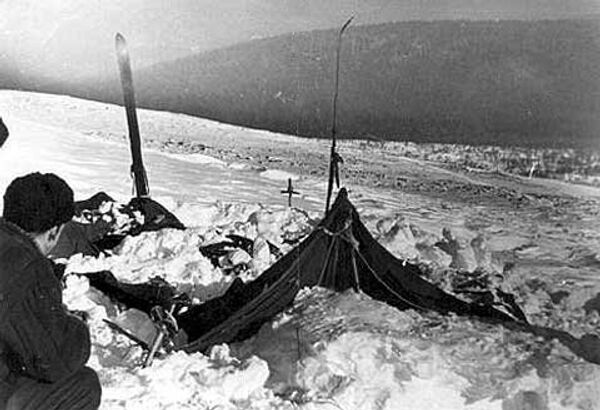MOSCOW, February 28 (Alexey Eremenko, RIA Novosti) – The United States has Area 51, a place shrouded in more myths and conspiracy theories than there are extraterrestrial civilizations in the Galaxy (probably). Well, the Soviet Union had the Mountain of the Dead – and its story is coming to movie theaters this week.
“The Dyatlov Pass Incident,” a US-Russian coproduction based on the Soviet Union’s arguably most intriguing mystery, is opening on Thursday in Russia, Belarus and Kazakhstan, with a tentative US release planned later this year.
The film, directed by Renny Harlin, famous for “Cliffhanger” and “Die Hard 2,” is based on the real story of the puzzling death of nine experienced hikers in the northern Urals on February 1, 1959.
Extraterrestrials, US spies, Gulag runaways and mind control weaponry have all been invoked to explain the group's demise, which took place on “the Mountain of the Dead,” thus named by the indigenous Mansi people. The mountain was later renamed Dyatlov’s Pass, after the group’s leader.
Tourists were sometimes found dead in the Soviet Union, but the problem was the nature of whatever caused the deaths of Igor Dyatlov and his charges, a mixed bunch of college students and recent graduates.
The tourists fled their tents on the night of the incident, slashing the fabric from the inside in a rush to escape, and abandoning most of their warm clothes – some of which were later found to be mildly radioactive.
Whereas some, expectedly, perished of hypothermia, three hikers died of severe blunt trauma – possibly stemming from powerful blows. Some bodies were found mutilated, missing eyes or tongues, which prompted suspicions of torture. However, no human traces were found in the area except for the hikers’.
Adding to the confusion, the local Mansi reported seeing fireballs over the area on the night of the incident. The official investigation failed to provide an explanation for the celestial sightings, while chalking the deaths down to an unnamed “compelling elemental force.”
In the Soviet Union, no conspiracy theories were allowed except for the government’s, and the incident vanished off the public's radar after a few publications in the local press.
However, reports about what happened at the Dyatlov Pass – complete with increasingly intricate explanations of the incident – began appearing in the media after perestroika, spawning in the 2000s a full-blown online cult that spilled offline with Harlin’s film.
“It’s a real 100-percent mystery, isn’t it?” Harlin said in an interview published by the Colta.ru culture news website in Russian earlier this month.
Among the more popular theories are an attack by prisoners fleeing nearby Gulag camps, or by officers tracking the escapees – or even Bigfoot, as well as tests of some secret weapon, possibly poisonous or having mind control properties that could have driven Dyatlov’s group insane.
The latest in-vogue theory claims that the group comprised American spies heading for a meeting with their colleagues parachuted to a remote mountainous area – but also KGB agents tracking them under the guise of regular tourists.
Of course, there is also the possibility of an avalanche that killed some tourists and drove others away from the danger zone and into eventual death from the cold and injuries – but this version is too pedestrian for the legions of enthusiasts foaming at the mouth over Dyatlov's group’s fate.
The film is done in “found footage” style, popularized by “The Blair Witch Project,” on an austere budget of $4.5 million, according to Kommersant’s estimates, and stars Gemma Atkinson, Richard Reid and Matt Stokoe.
An early report in Russian lifestyle bi-weekly Afisha – which appeared to have been the first to review “The Dyatlov Pass Incident” – cautiously praised it for tackling an “ancient Soviet myth” and coming out “a pretty elegant affair.”
Indeed, it is the neo-mythological quality of the story, which exposes a previously unimaginable side of the Soviet Union, where rationality was made into a cult, that the discussion of “Dyatlovmania” in Russian media seems to focus on.
“The popularity of the Dyatlov incident is based on…this near consensus about Soviet life before [Leonid] Brezhnev…: Behind the black-and-white photos and the tourist hikes in honor of another Party Congress lies a completely different world,” prominent columnist Oleg Kashin wrote on Colta.ru in an article about Harlin’s movie – titled, tellingly, “A Myth Is Born.”




